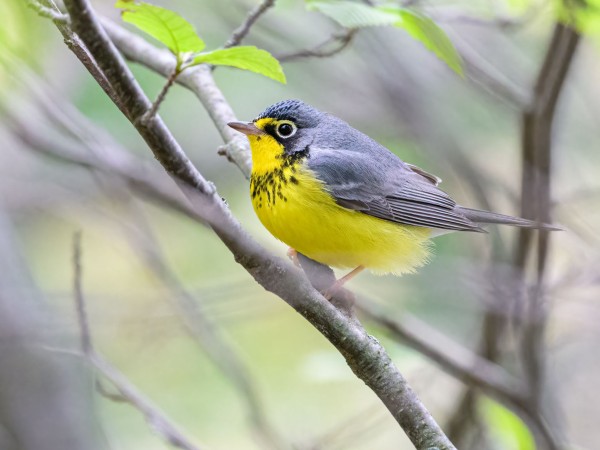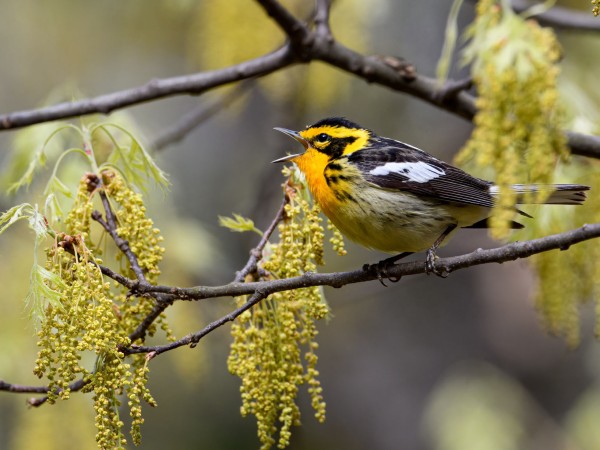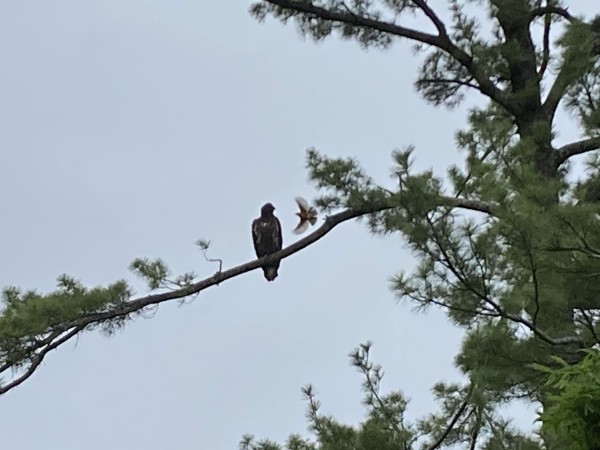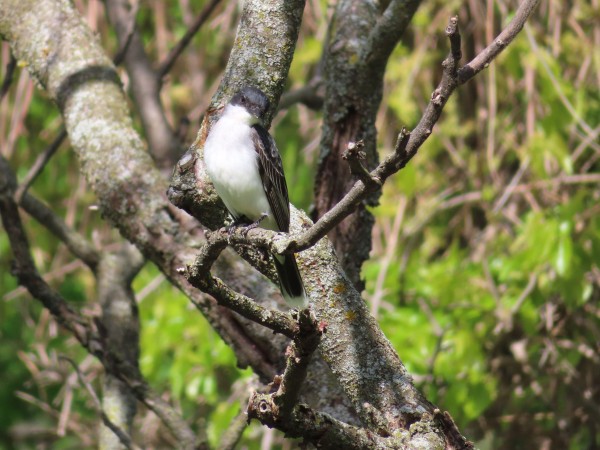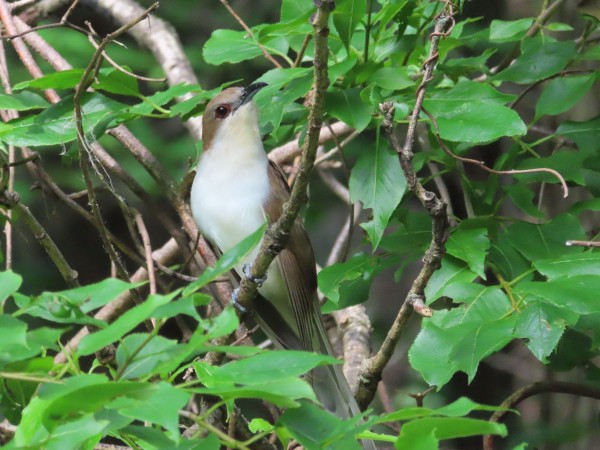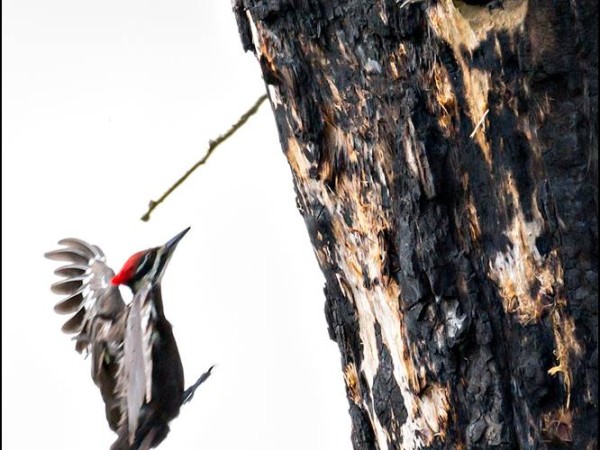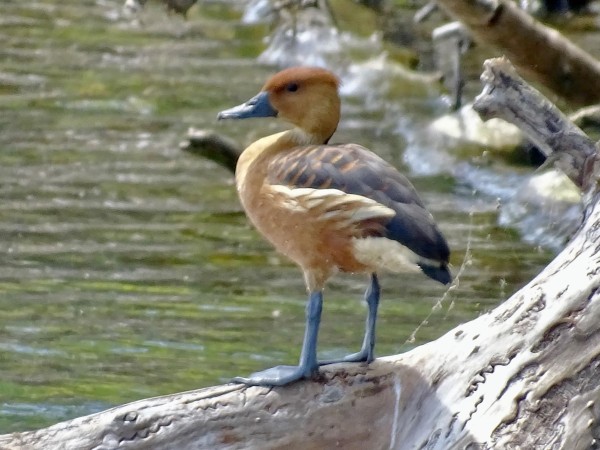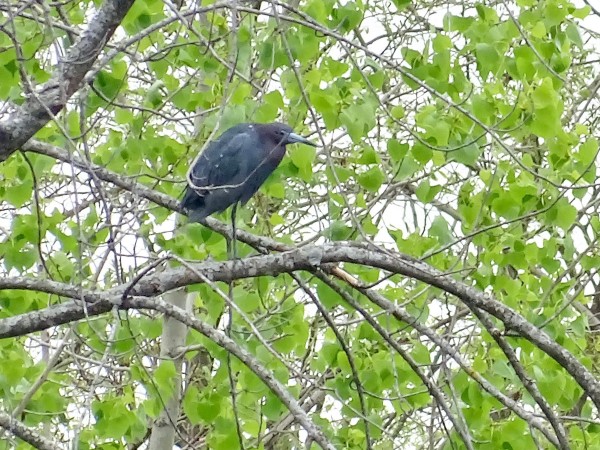Chuck's Birding Report #114
17 May - 23 May 2022
Dear fellow flock of birders,
So how have the birds changed over the past week?
I’m not sure everyone experienced this but I feel the number of warblers is way down. It’s my sense that many of the warbler species have moved through Dane County and continued north. We are mostly left with the ones that stay here, nest and raise their young. Those three species are the Yellow Warbler, the Common Yellowthroat and the American Redstart. Was everyone successful in seeing about 30 different species of warblers in the past 3-4 weeks?
I like all the warblers but two of my favorites are the Canada Warbler and the Blackburnian Warbler. I was lucky enough to see two Canada Warblers this past week but not the Blackburnian. I did see a Blackburnian Warbler the week before. Both are so striking! The Canada Warbler is gray above and mostly bright yellow below. It has an obvious white eyering and a black necklace dividing the throat from the breast. Off the necklace come trailing stripes of black extending down the breast. Its song is the national anthem of Canada – O Canada, our home and native land……….. I’m sorry, that’s not its song at all but the warbler always brings back memories of our visit to the 1967 World’s Fair in Montreal. For several days my wife and I went to the fair just as it opened each morning and at the opening they always played the Canadian National Anthem.
When I saw my first male Blackburnian Warbler many years ago I was so struck by the brilliant orange of its throat that I said for many years that it was my favorite bird. I always thought that the throat would glow in the dark.
We are very lucky to have great photographers in our area who are willing to share their bird photographs with me and you for these reports. Today Cynthia Carlson has so kindly shared two photos that are included: one is of the Canada Warbler and the other is of a Blackburnian Warbler. Thank you Cynthia!
I’ve tried to visit the Sandhill Crane sitting on the nest at Teal Pond most every day to see if all is going well. It does appear that all is apparently normal. Both sexes incubate the two eggs and I’ve seen the exchange of incubators twice. The canvas “curtains” that hang down help separate the people on the boardwalk from the nesting crane so I think that helps a lot. The window in the canvas allows people to see the crane and nest. The first sighting of the nest was the last day of April so the number of incubation days follows the same number of days in the month of May so today, the 23rd of May is the 23rd day of incubation. Incubation in Sandhill Cranes is 29 to 32 days so it won’t be long before hatching.
Last Friday when I birded the Arb and was walking toward the pump house I could hear American Robins making all kinds of noise as if upset about something. As I approached the tall White Pine Tree looming over the first out building I could see 10 -15 robins flying around and at something perched in the tree. I walked up the road to get a better look at what they were after. It turned out to be an immature Bald Eagle perched in the pine tree. The robins were flying right at the eagle causing it to duck its head at times. Included is a poor photo I took of the Bald Eagle but also nearby is a robin flying directly at the eagle. We do see Bald Eagles fly over the Arb occasionally but very seldom do we see any perched.
We have been seeing and hearing the Willow Flycatchers on Curtis Prairie. They are relatively small birds with mostly brown-olive upper parts and white under parts. They do have white wing bars. Included is a photo of the Willow Flycatcher.
Today while birding on Longenecker Gardens I saw another flycatcher. This one is much larger than the Willow Flycatcher. It is the Eastern Kingbird. It is dark gray to black above and white beneath. It has a black tail with a distinctive white band at the tip of the tail. It can fly directly but I often see it display a fluttering type of flight. A photo of this handsome bird perched in a tree is included.
Another bird I heard today but did not see was a Black-billed Cuckoo. I have been hearing Yellow-billed Cuckoos in other parts of Dane County but this is the first Black-billed Cuckoo I heard. It was moving along the woods on the north side of McCaffrey Drive. I tried to find it so I could see it but I failed to find it. Included is a photo of a Black-billed Cuckoo I took some years ago.
We have been trying to follow the Pileated Woodpecker that has been seen in a hole in a snag just west of Pond 2. I keep looking for it more recently but I just haven’t seen it. One of the adults may be inside the hole sitting on eggs so I wouldn’t see it. I hope that’s the case. Several days ago we saw a Northern Flicker come out of a hole a few feet above the Pileated Woodpecker hole. Ah ha we thought. It’s a two story woodpecker condo. I wonder if the two species can nest peacefully that close to each other. I did want to post another photo taken by Mike Bailey of the Pileated Woodpecker nest in a snag along the path toward Teal Pond. As I looked at the photo I thought it must have taken Mike a long time to capture that photo. Great photos such as Mike’s take a lot of patience to capture. Included is Mike’s photo of an adult Pileated Woodpecker approaching the woodpecker hole with two young heads sticking out. Thank you Mike for sharing your amazing photo with us!
The last two birds were not seen in the Arb but were seen in Dane County. Both are very rare sightings for Wisconsin.
The first bird was seen in Lake Waubesa very near the shore of Hog Island in Capitol Springs State Park. The state park is just south of Lake Farm County Park. This duck is called a Fulvous Whistling Duck. It has only been seen in Wisconsin one other time. It normally lives along the Gulf coast from Texas to Florida. A wonderful photo of this beautiful duck was taken by Pat Ready and he has kindly shared it with us. Thank you Pat!
The second bird was seen near a pond on the north side of Hwy 14 just west of all the stores such as Coscos, etc. and near Black Earth Creek. This bird is called the Little Blue Heron. Its normal range is along the Gulf coast from Texas to Florida. A photo of the heron was again taken by Pat Ready and he has kindly shared it with us. Thank you Pat!
Both photos were not easy to get so again thank you Pat for your great effort!
That’s the Arboretum bird report for the past week.
I wish all of you good health and good spring birding too,
Chuck

